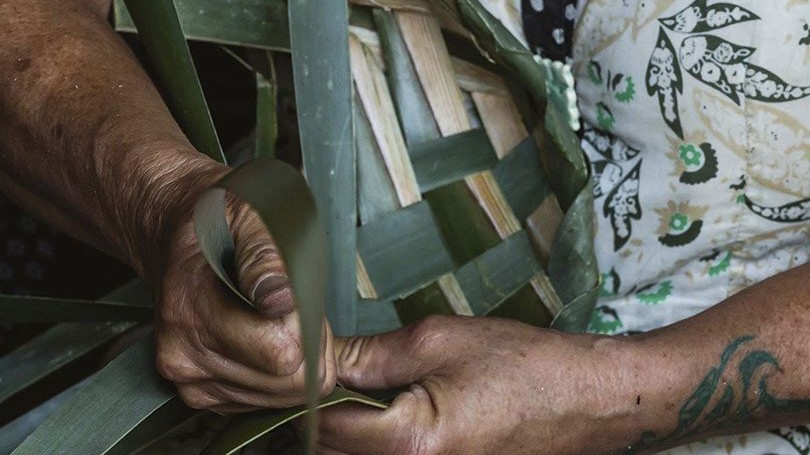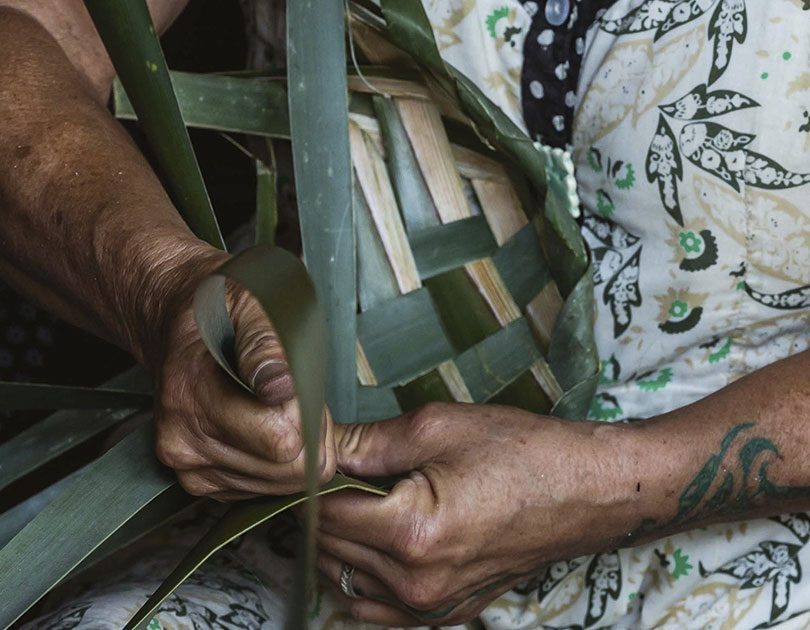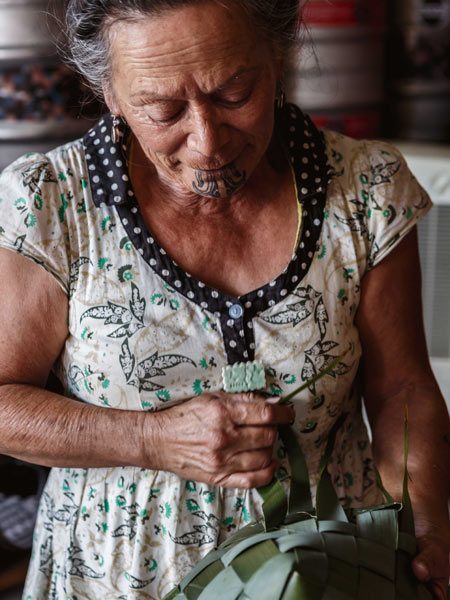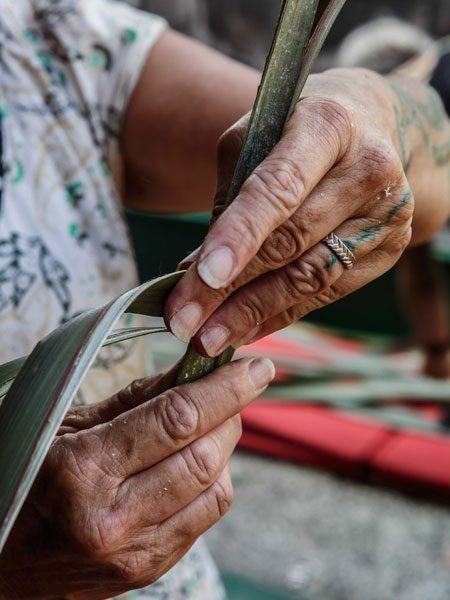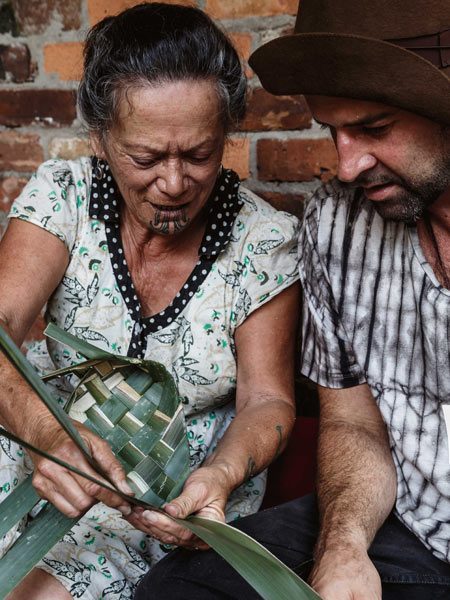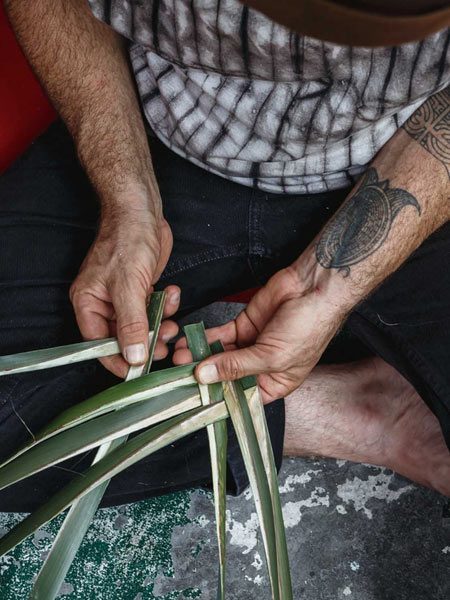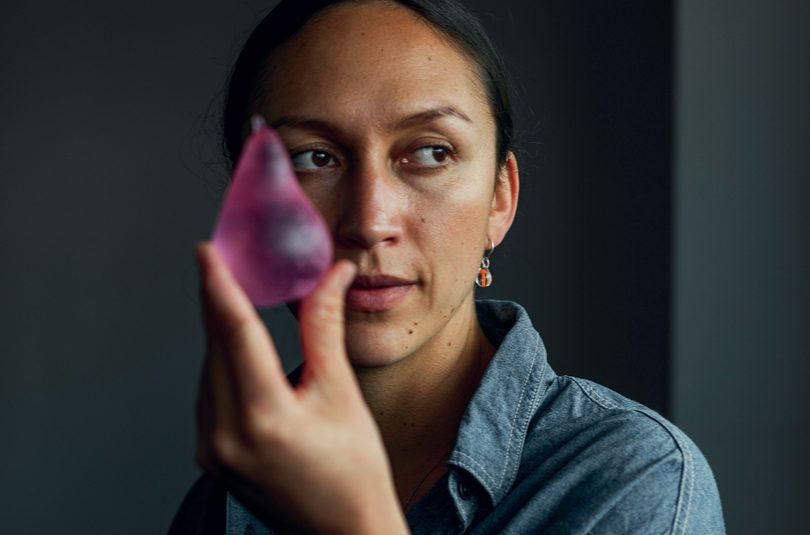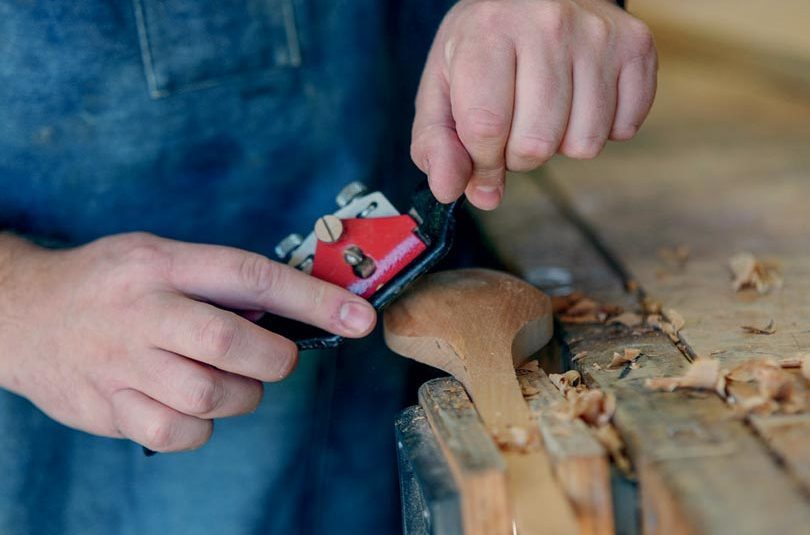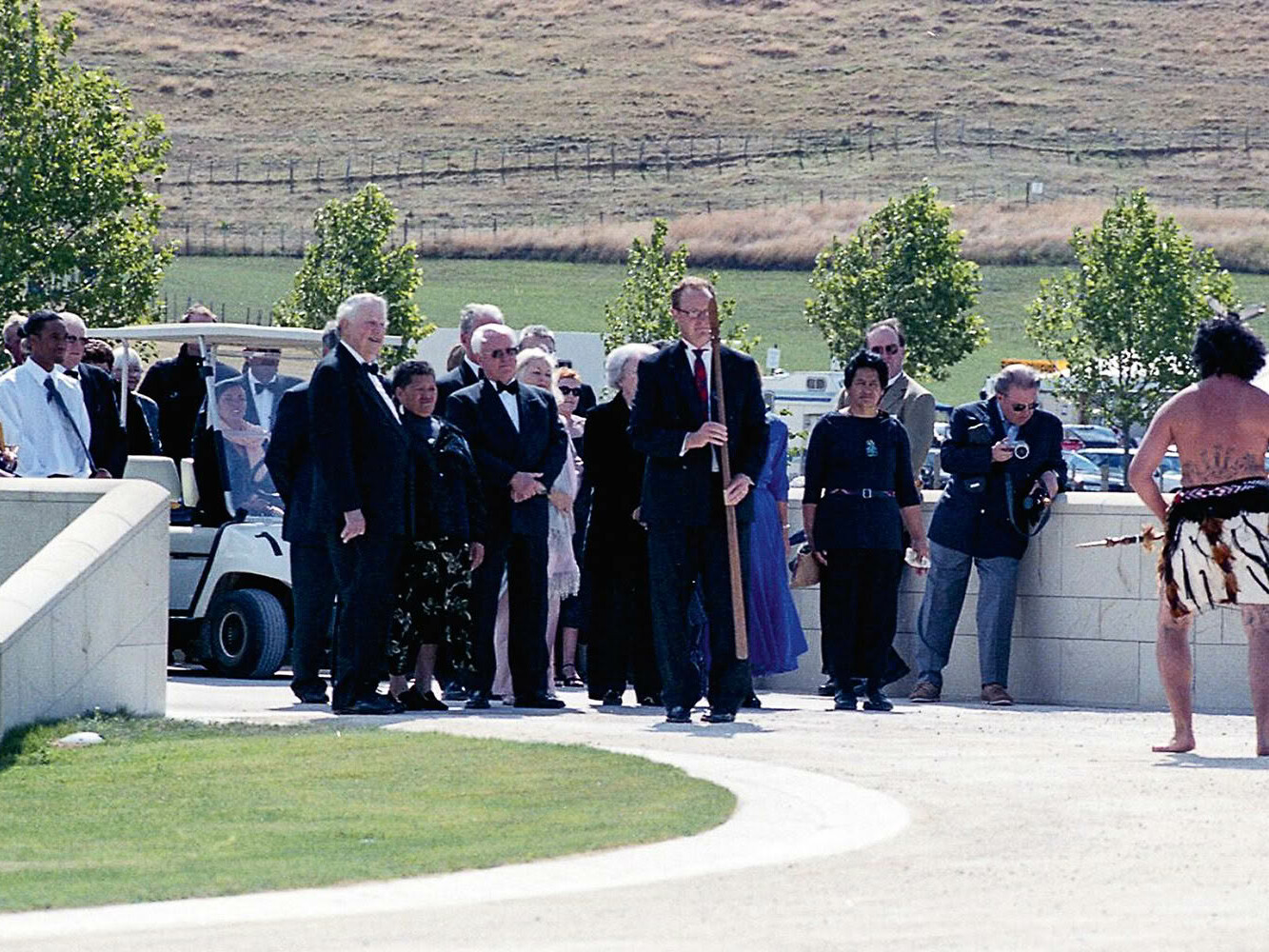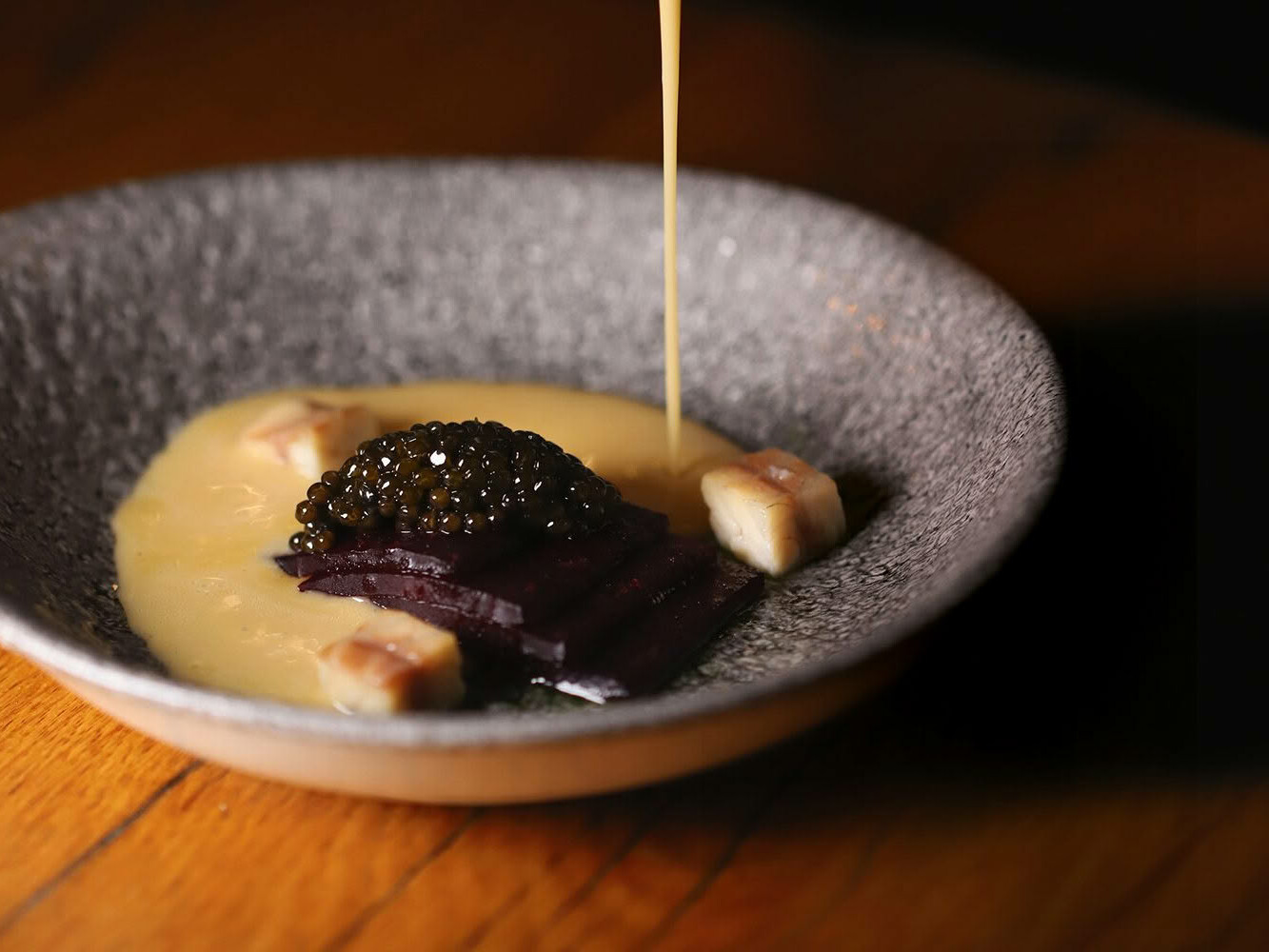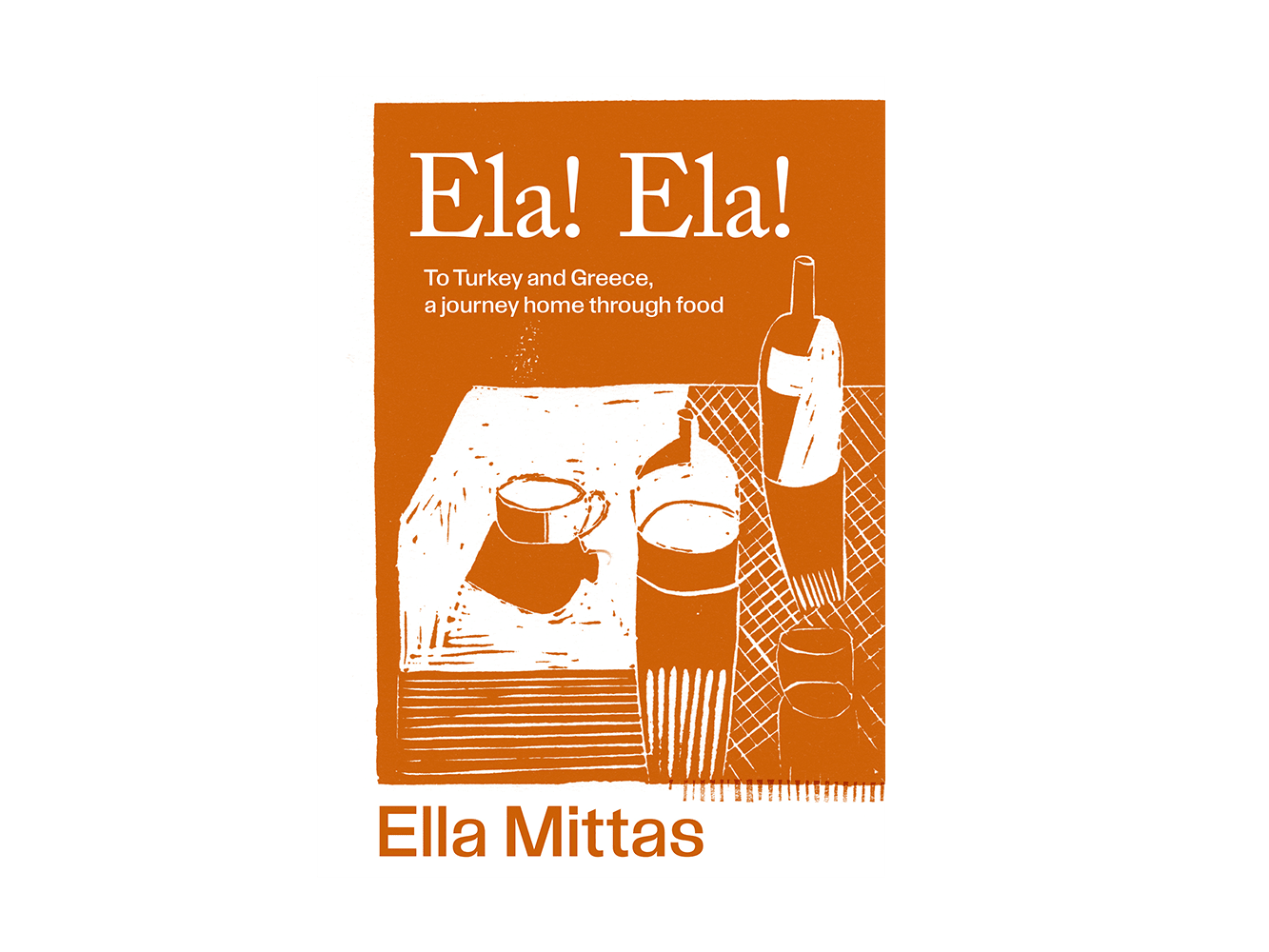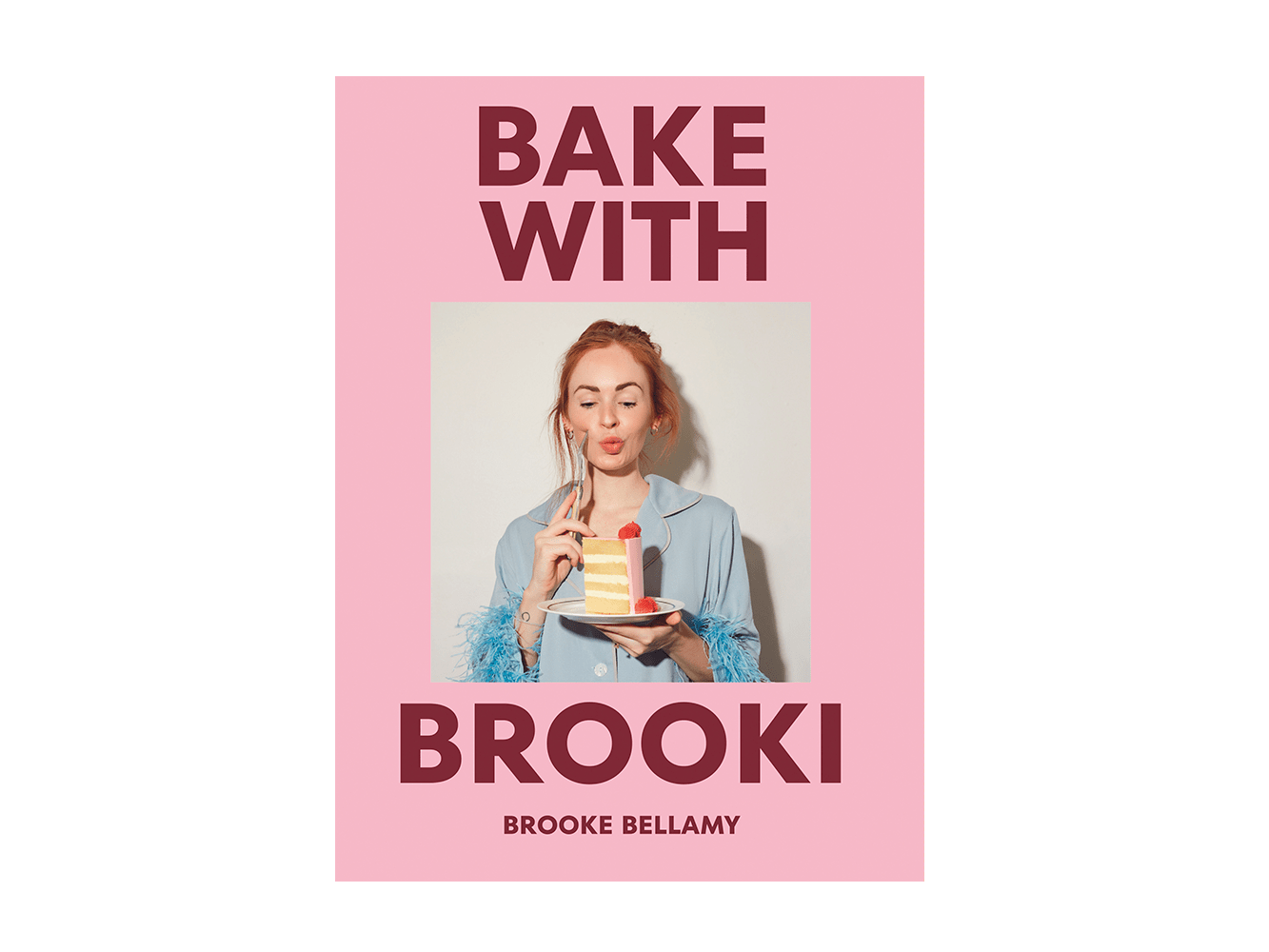A native plant that grows like a weed is woven into this artisan’s everyday life, writes TRACY WHITMEY.
Jude Hoani- Te Uruti had no formal training in weaving, nor did she learn from her mother or grandmother. One day she just cut some kōrari (flax) and starting weaving.
Jude traces a neat scar just below her left elbow, the legacy of a broken arm when she was in her twenties. “This is what got me started. I was making my living fishing in the Marlborough Sounds and doing my hermit thing. I was sick of the world.”
Playing tag one wet August day with her sister’s children, she was chased down the hallway, slipped on the carpet runner and splintered her arm. A few days later, when the weather finally let up enough to get to the doctor, she needed several screws to hold together the shattered bone. Worried that she was going to end up with a withered little arm, she wanted to do something to keep it moving. Going down to check on her boat one morning she passed by a kōrari. “I’d being going past it for six years and never noticed it before.” She gathered some flax and started weaving – just like that. She had no experience of weaving, but also no expectations.
“I didn’t have someone to tell me what to do. Because of my broken arm I developed my own ways. At the age I am now I want to teach, at that stage I just wanted to do.”
She’s carrying an impressive kete of her own design that showcases her skills and demonstrates the many techniques that go into a piece: weaving, sewing, plaiting, splicing. She shows me how the plaited handles are deftly spliced. Coming from an isolated farming family, she learned skills that would serve her well in future.
“If we needed a rope then we made a plait; I don’t like knots and from learning to sail I learned to splice. Kōrari is slippery, so knots are no good.”
These days Jude runs workshops to introduce weaving to a wide audience. “I get immense satisfaction from putting kōrari back into everyday life like it used to be, giving people an appreciation of nature that they might not have had.”
Starting with the basics, “the first thing we learn to weave is a paaro (food bowl). It’s quick and easy to make a paaro – I can do one in three minutes.” For the first workshop Jude provides the kōrari: while the collection of the kōrari is an integral part of the weaving process Jude recognises that most beginners just want to get on with making.
In a three-hour class participants make three paaro to take home. In a later class she will take students to a pā kōrari (a plantation of kōrari ) and talk about care and protection of the plants and how to cut it.
“Kōrari is still very relevant to today’s life. Now the world’s come to realise that plastic is not good, kōrari is a wonderful resource that grows like a weed and can be used every day. People are rushing off to mindfulness things. To weave kōrari you have to be in the moment. It’s the best mindfulness training anyone could have.”
She currently runs her workshops in a variety of spaces, including Coco’s Cantina on Auckland’s Karangahape Road. Co-owner Damaris Coulter invited Jude to run a workshop for staff, then asked her to make menu holders and kete to use in the restaurant. Jude has also worked with Monique Fiso of Hiakai and is now doing some work with Kiwi chef Toby Archibald for a restaurant in Dallas, Texas.
Eschewing a fixed workshop or studio reflects Jude’s back-to-basics approach.
“Going back, the workshop was the pā, you didn’t need a special place. I don’t want people to have barriers,
I just want them to walk up to kōrari and start weaving.” @jh.weaver
I get immense satisfaction from putting kōrari back into everyday life like it used to be.
WHO: JUDE HOANI-TE-URUTI SKILL: WEAVING
Read More…
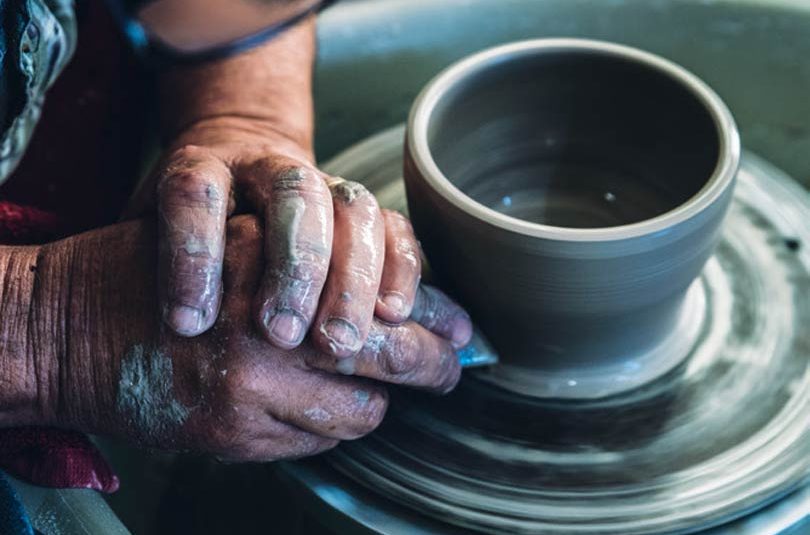
IN GOOD FORM
When Kate O'Sullivan put out a call to the members of her club to ‘ bring a plate’ it wasn’t a batch of sausage rolls or a tray of chicken wings that she had in mind.
SEE MORE FROM CUISINE
Suculent where the sauce is the soul
As in any thriving city, hotspots come and go and with so much to…

